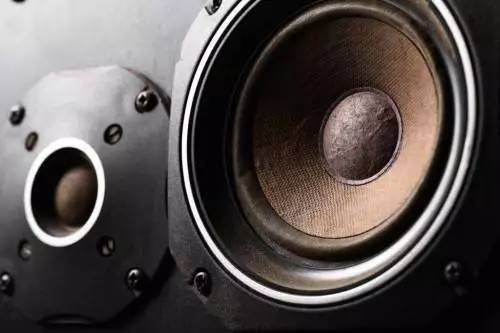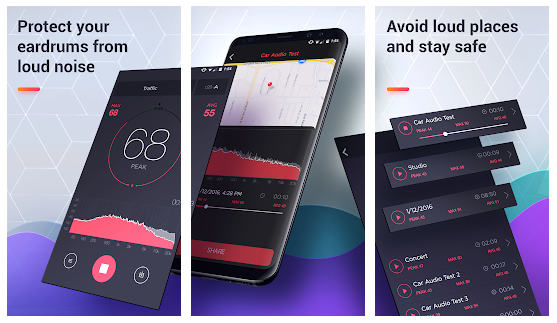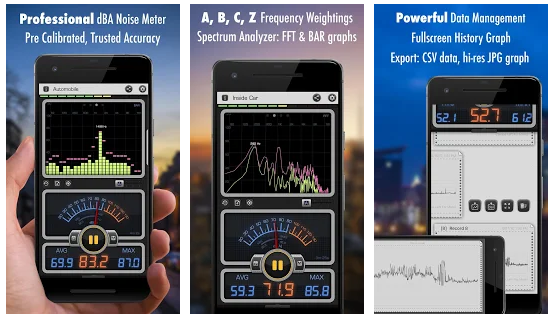This article is written by Xiangyu Ren, (Ruth), an international intern for WorldBeat Center from the University of Shanghai who is majoring in Physics. This is her second year in college and is exploring her potential career opportunities.
Vroom! Beep! Beep! Can you hear the noise of cars? Are you aware of the sounds made by the printer in your office or the loud music played by your neighbors? If you’re not, let’s stop talking and listen.
Now you see, we are totally engulfed by the sea of sound. Those disturbing sounds you hear are referred as noise pollution.1 It is just like air pollution and water pollution. The only difference is that you can see dirty water and grey sky but you cannot see ugly sound. So attention, never underestimate noise!
So, what can noise do to you?
Obviously, hearing loss can be directly caused by noise pollution. Being exposed to loud drilling noises, for long intervals of time, can cause permanent loss of hearing. This is due to the damage made by the powerful sound waves to your tiny hair-like cells in the inner ear.2 Once they’re damaged, they can’t be healed or repaired.
What’s more? Being surrounded by disturbing sound for a long time can drive you crazy. This kind of feelings always raise your blood pressure. After a long period of time it will finally lead to hypertension. Besides, it can also put you in a bad mood and provoke negative behavior which brings you more troubles. 3
Last but not least, children are more vulnerable than adults. Studies have shown that noise pollution has negative impacts on children’s cognitive skills and hearing. It can be a long term disability. 4
Perhaps now you’ll take the noise you’re exposed to more seriously than before. There’s many ways to escape the noise of the city or your environment including meditation, backpacking in the mountains, a drive to the desert or listening to white noise like the recording of rain or the sound of water fountains. Can you think of ways you can escape noise?


Citations:
1.Jerry A. Nathanson, Richard E. Berg “Noise pollution?”
2.Environmental Protection Agency “Noise and Its Effects on kids“
3.Environmental Pollution Center“Human Diseases Caused by Noise Pollution”
4.NEUROSURGERY“Cognitive Effects of Noise Pollution on Kids“



How can we deal with noise pollution?
From Ruth of international internship
Noise in your neighborhood:
1.Always keep your windows closed.
2.Change your windows from single-glass to double-glass.
3.If you live in an urban neighborhood, wear ear plugs when you are sleeping.
4.Wear ear plugs in loud places like concerts or during firework shows.
5.Fill your walls with sound-proofing materials.
6.Don’t use your washing machines late at night. Cooperation makes it easier for all of the neighbors to release suffering from noise.
7.Turn off your electronics when you are done with them. Because they all make noise when they are not used even you are not aware of the sound.
8.Move out of the city. Though it costs a lot, it worth to do so.
Noise at work:
1.Wear sound-proof headphones.
2.Create tuning sound around you. But don’t disturb others.
3.Hang up carpets to take in the noise as well as decoration.
Citation:
1. Kirschner, Chanie- “6 ways to deal with noise pollution”
2.Hearing Consultants- “Dealing with Noise Pollution in Your Neighborhood”
How do you know if the noise is too loud?
The best way is to have a decibel reader.
Use a decibel chart guide to measure safe sound levels.
Decibel Meter Apps Recommendation
By Ruth, WorldBeat Center’s international intern
Advantages:
a) There is no advertisement
b) The table is easy to read.
c) It can record the noise when you are measuring the decibel. Besides it is easy to find the records which helps you connect loudness with decibel.
d) It can match the sound recorded with common sounds so that you can understand about the decibel better.
Disadvantages:
1.It is a little inconvenient to clear what the record is. You have to rename it.
Total description: It is specialized by its accuracy, easy-to-use interface and multi-function. dB Meter displays real-time sound levels both numerically (in decibels) as well as radio. Besides, the location is also recorded with the sound.

Advantages:
1.You can see a clear illustration of the sound. When it goes high and when it goes down.
2.You can take a photo of the situation where the sound is measured, which makes it easier to recall the loudness.
3.It gives more details of the sound which includes such as TWA, average value, maximum and minimum value.
4.The records are shown in a clear way.
Disadvantages:
1.There are too many advertisements.
2.You cannot record the sound.
Total description: Decibel X (Free with in-app purchases; available for iOS and Android) This popular and free decibel meter app turns your smartphone into a professional (and portable) sound level meter. It’s known for its accuracy, reliability and easy-to-use interface. Decibel X displays real-time sound levels both numerically (in decibels) as well as visually in beautiful wave and bar graphs. Bonus: This app is also supported by Apple Watch, so you can measure sound right from your wrist.(From Miracle-Ear website)

App Comparison:
| Location | dB Meter | Decibel X |
| Inside with music class | 85.00 Z | 90.50 Z |
| Outside driveway | 63.25 Z | 66.25 Z |
| No car passing | 65.75 Z | 68.25 Z |
| One car passing | 73.25 Z | 78.00 Z |
| More traffic passing | 78.25 Z | 85.00 Z |
This sample decibel reading was taken using the dB Meter app and Decibel X app using an Android mobile phone. The sound readings were taken inside and outside (driveway and main intersection) of WorldBeat Center in San Diego, CA. The comparison of apps shows that each app might differ in the decibel value that is read. In this particular case the values given by dB Meter were always lower than the Decibel X app.

